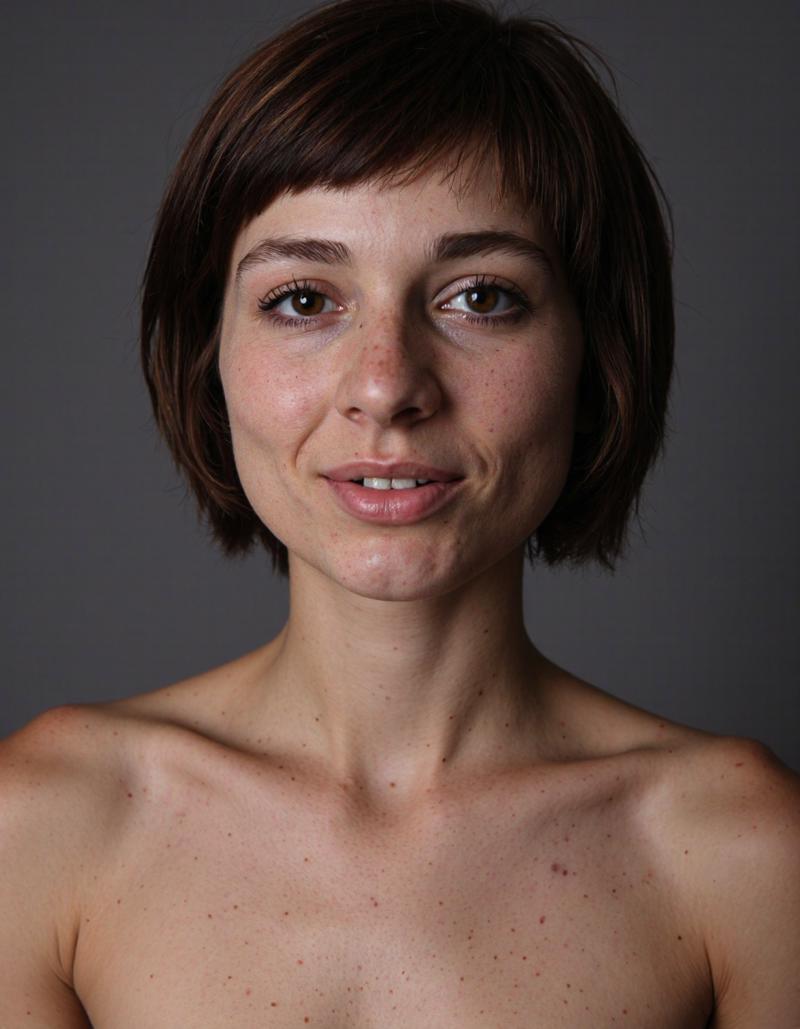Flux Skin Solved: Achieving Realistic Skin in AI-Generated Images
PolyPhaze | Generate reality @ PolyPhaze | Patreon
Are you tired of AI-generated portraits with waxy, plastic-looking skin? If you’ve used Flux.1 models, you’ve likely encountered this frustrating issue. While the model excels in other areas, skin textures often lack the fine details that make human skin appear natural. But don’t worry—I’ve found a solution!
In this article, I’ll share a workflow I developed to solve this issue, creating stunning, realistic skin in your AI-generated images. Whether you’re a ComfyUI user or an AI art enthusiast, these tips will help you elevate your results.
The Problem: Waxy and Plastic-Looking Skin
Flux.1 models are built on diverse datasets that include 2D and 3D images. While this diversity makes the model versatile, it also dilutes the realism of human skin, leaving it looking overly smooth and artificial. The petite details of skin—like pores, fine lines, and subtle imperfections—are often ignored by diffusion models.
The Solution: A Fine-Tuned Workflow
I fine-tuned a Flux.1-dev model using a dataset of face close-ups to help it assimilate the intricate characteristics of human skin. This model, unofficially named “Female Anatomy” for now, served as the foundation of my workflow. But fine-tuning alone wasn’t enough—I needed an advanced processing method to reintroduce noise and texture to the skin without disrupting other details.
Key Tools: Advanced Lying Sigma and Detail Daemon Samplers
The breakthrough came with the use of two powerful nodes in ComfyUI:
Advanced Lying Sigma Sampler Node:
This node modifies the sigma distribution of noise during sampling, creating more nuanced textures for fine details like skin. By shifting how noise behaves, it mimics the natural irregularities of human skin.Detail Daemon Sampler Node:
This tool enhances micro-details that are often lost in the diffusion process. Together with the sigma sampler, it amplifies the realism of skin textures without overpowering other elements of the image.
👉 You can explore these tools further on their GitHub page.
Masking for Perfection: Isolating the Skin
To refine the skin without affecting other facial features, I used three mask nodes in ComfyUI:
First Person Face Landmark Mask Generator:
This generated a full-face mask.Second Person Face Landmark Mask Generator:
This mask targeted the eyes, eyebrows, and lips.Subtraction Node:
By subtracting the second mask from the first, I isolated just the skin of the face.
This precise masking step was critical to ensuring the final results didn’t create odd distortions in other facial features.
Final Touches: Subtle Noise Injection
After processing the masked area, I applied aesthetic filters and injected subtle noise to enhance the skin texture further. These finishing touches helped achieve a natural, cohesive appearance, blending the skin seamlessly with the rest of the image.
See the Results for Yourself





If you like this content, consider subscribe our Patreon!




